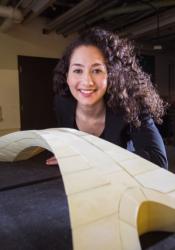Venice
Venice is where Leonardo created his designs for the Golden Horn bridge after Leonardo returned from the French incasion of Milan in 1499. He heard of the bid for the bridge from Turkish merchants in Venice at the time. Leonardo used his previous knowledge of geometry to design the bridge, including the parabolic curve, pressed bow, and keystone arch to stabilize the bridge despite it not having support beams.
Chandler, David L. “Engineers Put Leonardo Da Vinci's Bridge Design to the Test.” MIT News, Massachusetts Institute of Technology, 9 Oct. 2019, news.mit.edu/2019/leonardo-da-vinci-bridge-test-1010.
Daley, Jason. “Scientists Prove Leonardo Da Vinci's 500-Year-Old Bridge Design Actually Works.” Smithsonian.com, Smithsonian Institution, 16 Oct. 2019, www.smithsonianmag.com/smart-news/da-vincis-unbuilt-super-long-istanbul-....
TRTWorld. “Leonardo Da Vinci’s Future-Proof Design for an Istanbul Bridge.” Leonardo Da Vinci's Future-Proof Design for an Istanbul Bridge, TRT World, 29 Nov. 2019, www.trtworld.com/turkey/leonardo-da-vinci-s-future-proof-design-for-an-i....
Coordinates
Latitude: 45.440847400000
Longitude: 12.315515100000
Longitude: 12.315515100000

